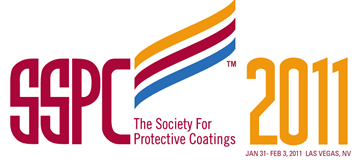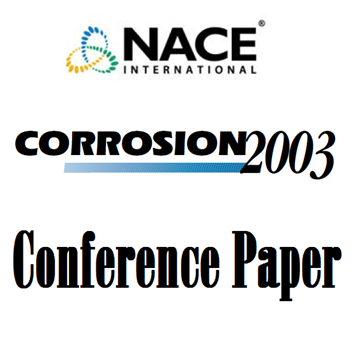Search
Corrosion Monitoring and Control
View as
Sort by
Display
per page
(Mg Rich Primer-Powder Topcoat) Coating System for the Corrosion Protection of Al Alloys
Product Number:
51217-052-SG
Publication Date:
2017
$20.00
“Introducing The Nation’s First Bachelor of Science Degree in Corrosion Engineering and the National Center for Education and Research on Corrosion and Materials Performance
Product Number:
41211-627-SG
Publication Date:
2011
$20.00
02041 CORROSION RESISTANCE OF LOW Cr BEARING STEEL IN SWEET AND SOUR ENVIRONMENTS
Product Number:
51300-02041-SG
ISBN:
02041 2002 CP
Publication Date:
2002
$20.00
02235 IMPROVEMENTS ON DE WAARD-MILLIAMS CORROSION PREDICTION AND APPLICATIONS TO CORROSION MANAGEMENT
Product Number:
51300-02235-SG
ISBN:
02235 2002 CP
Publication Date:
2002
$20.00
02256 CATHODIC PROTECTION SHORTING STRAP INDUCED CORROSION AND FAILURE OF PRESTRESSED CONCRETE PIPE
Product Number:
51300-02256-SG
ISBN:
02256 2002 CP
Publication Date:
2002
$20.00
02263 Impressed Current and Galvanic Discrete Anode Cathodic Protection for Corrosion Protection of Concrete Structures
Product Number:
51300-02263-SG
ISBN:
02263 2002 CP
Publication Date:
2002
$20.00
02276 WHY CORROSION INHIBITORS DO NOT PERFORM WELL IN SOME MULTIPHASE CONDITIONS: A MECHANISTIC STUDY
Product Number:
51300-02276-SG
ISBN:
02276 2002 CP
Publication Date:
2002
$20.00
02382 Update on an Information System for High Temperature Corrosion
Product Number:
51300-02382-SG
ISBN:
02382 2002 CP
Publication Date:
2002
$20.00
02446 MICROBIOLOGICALLY INFLUENCED CORROSION FAILURE ANALYSIS OF 304L STAINLESS STEEL PIPING SYSTEM LEFT STAGNANT AFTER HYDROTESTING WITH CITY WATER
Product Number:
51300-02446-SG
ISBN:
02446 2002 CP
Publication Date:
2002
$20.00
02554 SOHIC RESISTANCE OF C-Mn PLATE STEELS USED IN REFINERY SERVICE
Product Number:
51300-02554-SG
ISBN:
02554 2002 CP
Publication Date:
2002
$20.00
03235 ATMOSPHERIC CORROSION SUPPRESSION THROUGH CONTROLLED HUMIDITY PROTECTION (CHP), AN OPERATIONAL READINESS AND FORCE MULTIPLIER
Product Number:
51300-03235-SG
ISBN:
03235 2003 CP
Publication Date:
2003
$20.00
03269 Observations of Corrosion of Electric Resistance Welded Galvanized Steel Pipe in Domestic Potable Water
Product Number:
51300-03269-SG
ISBN:
03269 2003 CP
Publication Date:
2003
$20.00












